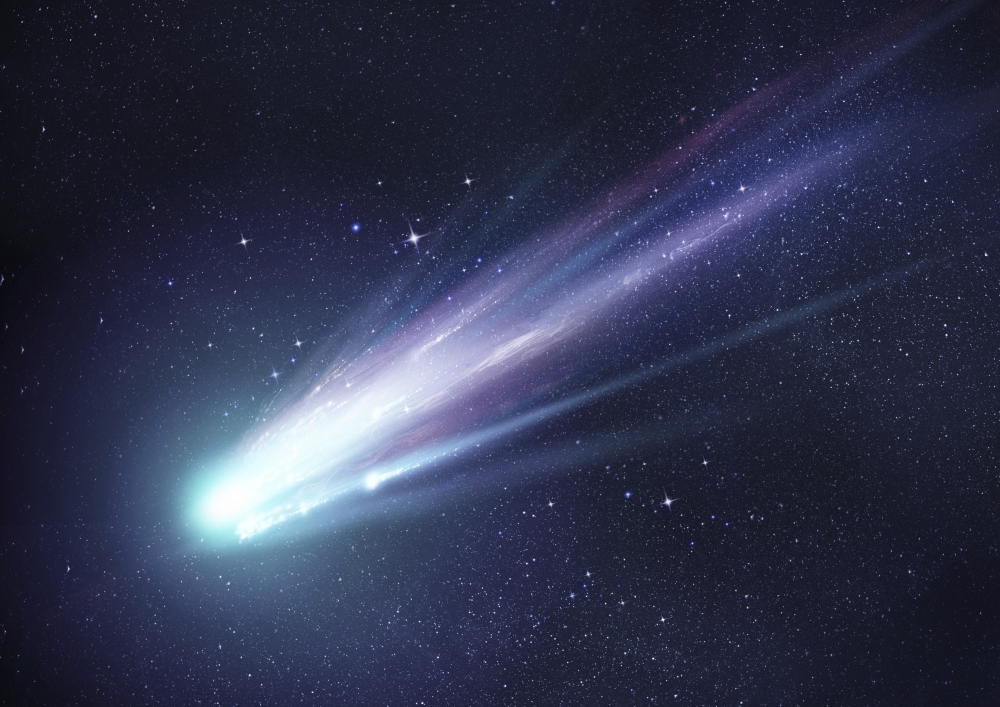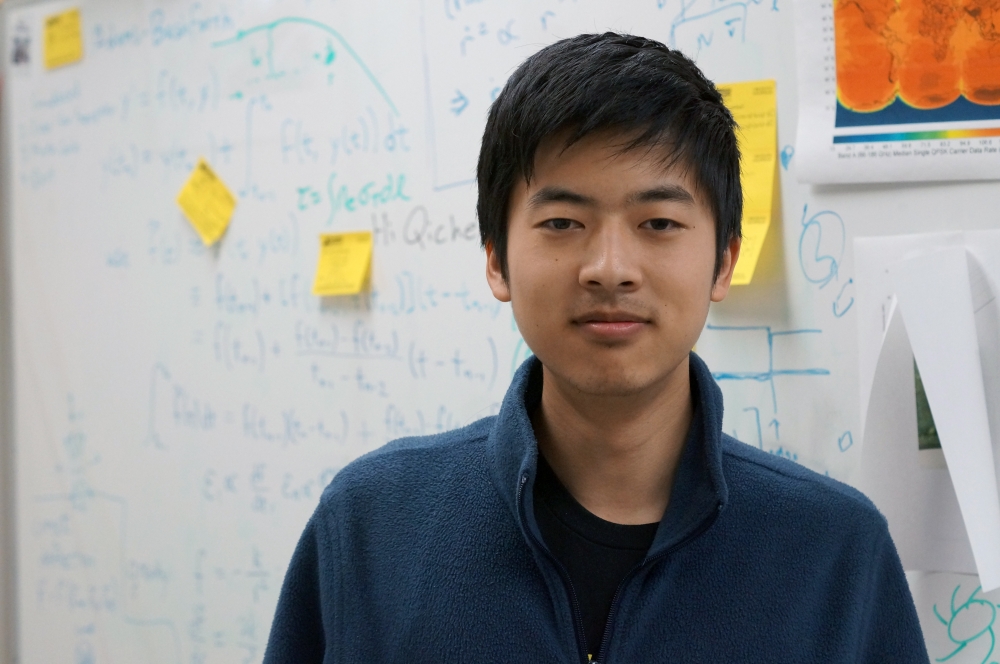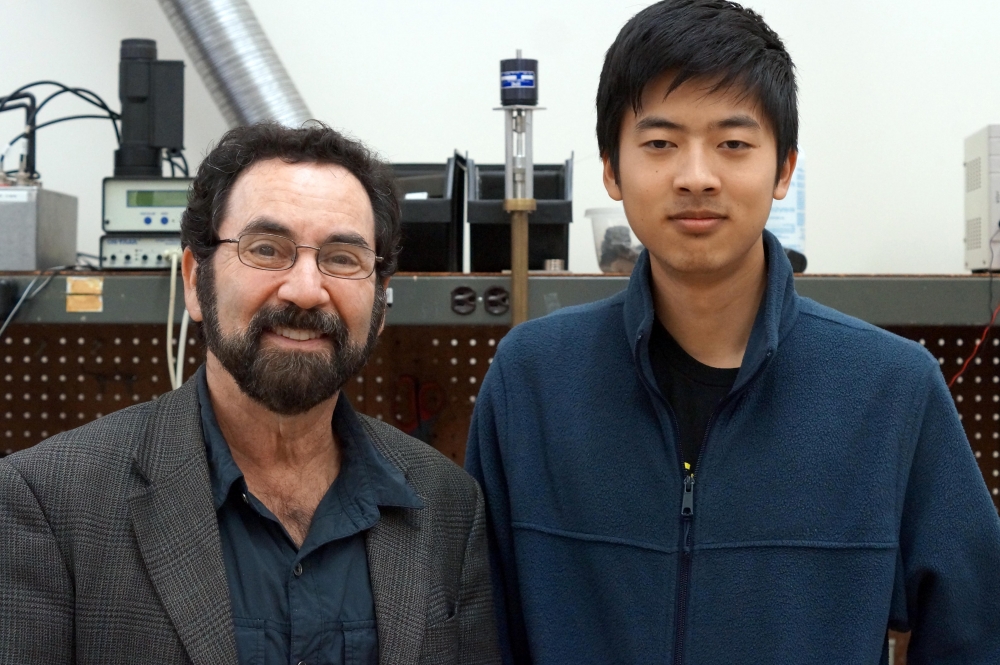A Comet Star
Growing up in the California desert, Qicheng Zhang developed an early appreciation for stars and the universal expanse beyond the sky. But his biggest space curiosity by far was with comets, those celestial bodies of ice, gas and dust, leftovers from the long-ago formation of stars and planets.
In high school, Zhang started writing software as a hobby and, naturally, turned to the sky for inspiration. His comet knowledge hit new heights through his development of a planetarium program, which required detailed information about a comet’s location, direction and brightness.
“As far back as I can remember, I’ve always been interested in astronomy and astronomical events,” said Zhang, now a fourth-year physics student in UC Santa Barbara’s College of Creative Studies. “Comets are one of the few astronomical phenomena that you can just go out, say to Campus Point at UCSB, and see it, night to night, moving. Back in the 2013 the sungrazing comet ISON was so bright you could walk out in the morning and see its bright beam. That’s so fascinating to me.”
At UCSB, that fascination has been fostered into a research focus that is already paying academic dividends for the aspiring astrophysicist. Zhang spent his recent summer in a prestigious, comet-focused internship at the U.S. Naval Research Laboratory. Shortly after returning, he kicked off the 2016 academic year by publishing and presenting a paper, co-authored with UCSB physics professor Philip Lubin, to the SPIE Optics and Photonics conference.
And the honors keep coming.
Now Zhang has received the Thomas R. McGetchin Memorial Scholarship from the Universities Space Research Association (USRA), an organization formed in 1969 under the auspices of the National Academies of Science. USRA awards just five scholarships annually to undergraduate students who tackle challenging scientific questions in the areas of space research and exploration, particularly astrophysics and astronomy, and create technologies and solutions that will positively impact people’s lives.
Zhang’s award-winning work, and the focus of his aforementioned paper, examines the potential use of directed energy for comet deflection. Adapting and applying in a new way technology developed at UCSB by Lubin and his group for planetary defense against asteroids, and for relativistic spacecraft propulsion for interstellar flight, the undergraduate scholar demonstrated that a comet could be manipulated to mitigate a potential impact with Earth by heating it with a high-powered laser array.
“A laser is such a narrow beam that you can produce more power on the target than the sun provides, allowing an effective defense against comet strikes,” explained Lubin, who heads UCSB’s Experimental Cosmology Group and is Zhang’s adviser. “It’s not something to worry about right away, but it is noteworthy that we now possess the technology to protect humanity against another threat, comets, which is what some people believe may have decimated the dinosaurs.






